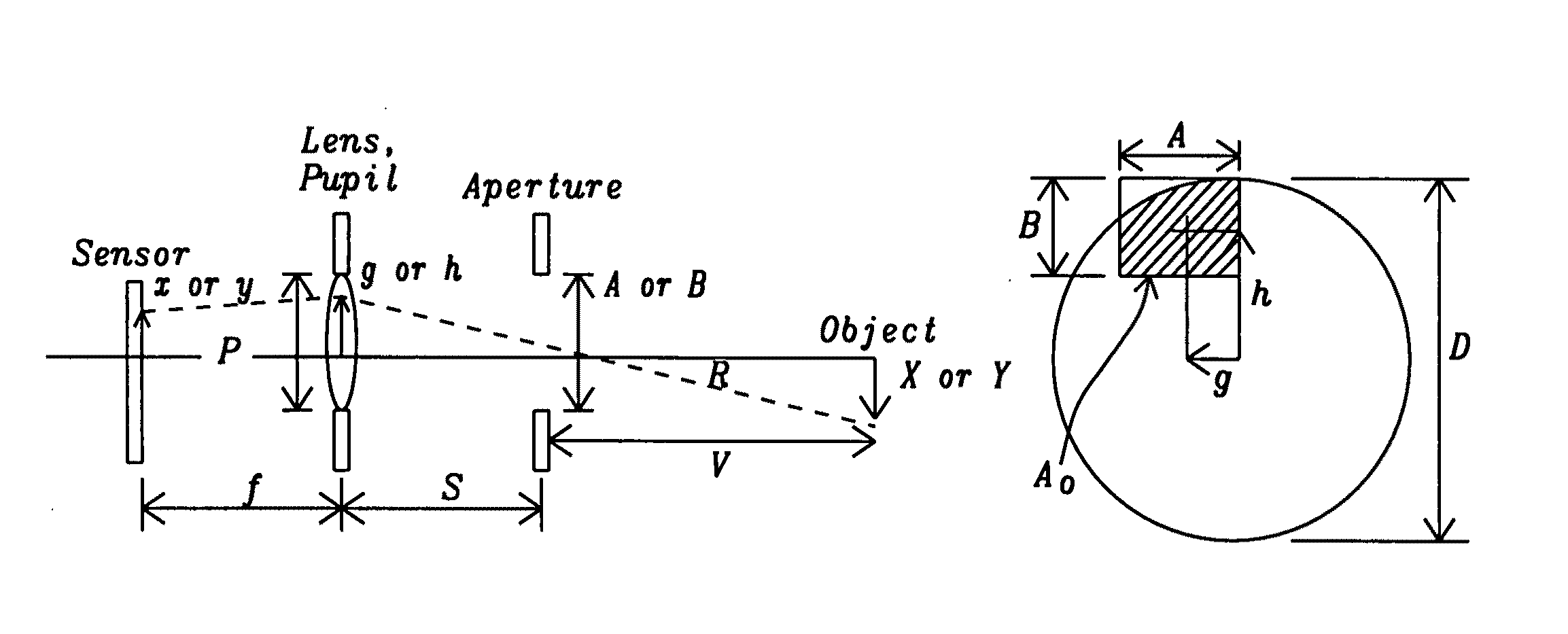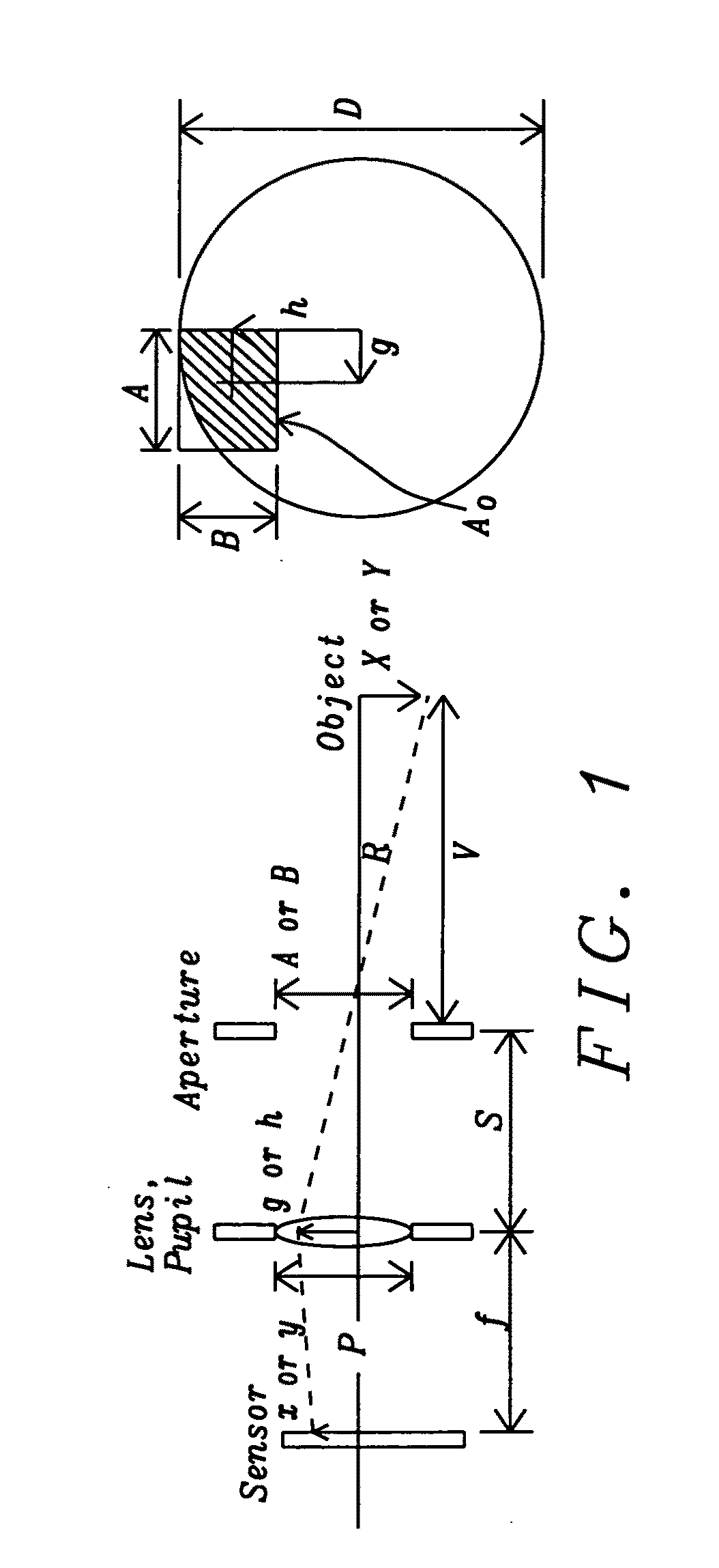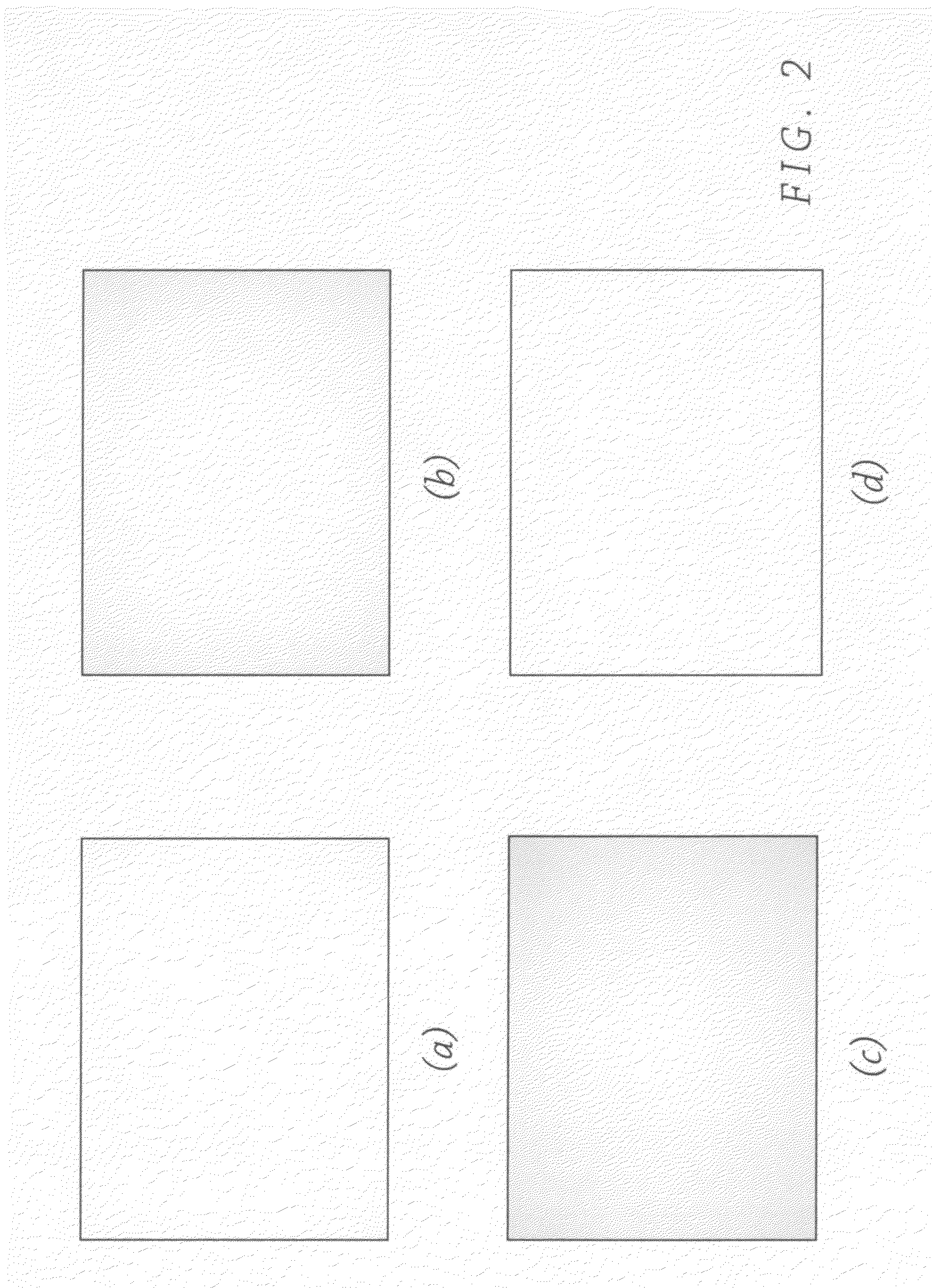Aperture shading correction
- Summary
- Abstract
- Description
- Claims
- Application Information
AI Technical Summary
Benefits of technology
Problems solved by technology
Method used
Image
Examples
Embodiment Construction
[0026]Circuits and methods for correction of aperture shading effects on images from digital camera systems are disclosed.
[0027]Herein we will refer to the standard LSC blockage as the lens' pupil only, whereas we will refer to additional shading blockages as those due to the convolution of axially distended apertures with the said lens pupils. Thus, correction for the convolution of these additional apertures with the lens pupil will herein be called aperture-shading correction (ASC). Furthermore, an alternative lens shading correction may also be required when just the aperture blocks the incoming light (i.e., when no light ever strikes the lens pupil).
[0028]FIG. 1. illustrates the geometry for analyzing aperture shading, wherein A, B=aperture width, P=pupil diameter, S=aperture-to-pupil separation, g, h=central point of aperture's shadow on pupil, R=ray angle into camera system, f=lens' focal length, x, y=image height on sensor, Ao=convolution overlap area used in calculating sha...
PUM
 Login to View More
Login to View More Abstract
Description
Claims
Application Information
 Login to View More
Login to View More - R&D
- Intellectual Property
- Life Sciences
- Materials
- Tech Scout
- Unparalleled Data Quality
- Higher Quality Content
- 60% Fewer Hallucinations
Browse by: Latest US Patents, China's latest patents, Technical Efficacy Thesaurus, Application Domain, Technology Topic, Popular Technical Reports.
© 2025 PatSnap. All rights reserved.Legal|Privacy policy|Modern Slavery Act Transparency Statement|Sitemap|About US| Contact US: help@patsnap.com



